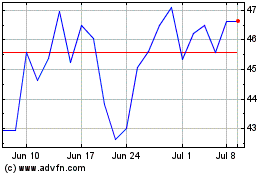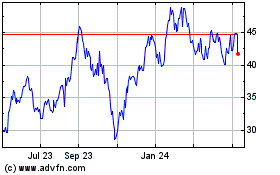UNITED STATES
SECURITIES AND EXCHANGE COMMISSION
WASHINGTON, DC 20549
FORM SD
SPECIALIZED DISCLOSURE REPORT
PAR Technology Corporation
(Exact name of registrant as specified in its charter)
|
Delaware
|
1-09720
|
16-1434688
|
|
(State or Other Jurisdiction of Incorporation)
|
(Commission File Number)
|
(IRS Employer Identification No.)
|
PAR Technology Park, 8383 Seneca Turnpike, New Hartford, New York 13413-4991
(Address of Principal Executive Offices) (Zip Code)
|
Matthew J. Trinkaus
|
|
(315) 738-0600 |
|
Name and Telephone Number Including Area Code of the Person to Contact in Connection With This Report
|
Check the appropriate box to indicate the rule pursuant to which this form is being filed, and provide the period to which the information in this form applies:
| ☒ |
Rule 13p-1 under the Securities Exchange Act (17 CFR 240.13p-1) for the reporting period from January 1 to December 31, 2014. |
Section 1 - Conflict Minerals Disclosure
| Item 1.01 |
Conflict Minerals Disclosure and Report |
The Company has filed a Conflict Minerals Report which appears as Exhibit 1.01 hereto and is publicly available at: www.partech.com/investors/xbrl-documents/.
A copy of the Company’s Conflict Minerals Report is provided as Exhibit 1.01 hereto.
Section 2 - Exhibits
Exhibit 1.01 – Conflict Minerals Report as required by Items 1.01 and 1.02 of this Form SD.
SIGNATURES
Pursuant to the requirements of the Securities Exchange Act of 1934, the registrant has duly caused this report to be signed on its behalf by the undersigned thereunto duly authorized.
| |
PAR TECHNOLOGY CORPORATION
|
| |
(Registrant)
|
| |
|
|
Date: May 29, 2015
|
/s/Matthew J. Trinkaus
|
| |
Matthew J. Trinkaus
|
| |
Controller and Chief Accounting Officer
|
Exhibit 1.01
PAR Technology Corporation
Conflict Minerals Report
For The Reporting Period January 1, 2014 through December 31, 2014
Statements in this Conflict Minerals Report (this “Report”), which express a belief, expectation or intention, as well as those that are not historical fact, are forward-looking statements, including statements related to our compliance efforts and expected actions identified under the “Additional Due Diligence and Risk Mitigation” section of this Report. These forward-looking statements are subject to various risks, uncertainties and assumptions, including, among other things, our customers’ requirements to use certain suppliers, our suppliers’ responsiveness and cooperation with our due diligence efforts, our ability to implement improvements in our conflict minerals program and our ability to identify and mitigate related risks in our supply chain. If one or more of these or other risks materialize, actual results may vary materially from those expressed. For a more complete discussion of these and other risk factors, see our other filings with the Securities and Exchange Commission (“SEC”), including our Annual Report on Form 10-K for the year ended December 31, 2014. We caution that undue reliance should not be placed on these forward-looking statements, which speak only as of the date of this Report, and we undertake no obligation to update or revise any forward-looking statement, except to the extent required by applicable law.
This Report has been prepared pursuant to Rule 13p-1 and Form SD under the Securities Exchange Act of 1934 (the “Rules”) for the reporting period of January 1, 2014 through December 31, 2014 (the “Reporting Period”). The Rules impose certain reporting obligations on SEC registrants whose manufactured products contain conflict minerals which are necessary to the functionality or production of their products. The minerals covered by the Rules are columbite-tantalite (coltan), cassiterite, gold, wolframite, or their derivatives, which are limited to tantalum, tin and tungsten (collectively “Conflict Minerals”), the trade in which sometimes benefits armed groups operating in the Democratic Republic of the Congo or an adjoining country (consisting of Angola, the Republic of the Congo, Central African Republic, South Sudan, Uganda, Rwanda, Burundi, Tanzania, and Zambia) (collectively, the “Covered Countries”).
Company Overview
The Company has two reportable segments, Hospitality and Government. The Hospitality segment offers integrated solutions to the hospitality industry which include hardware platforms and software applications utilized at restaurants, resorts, hotels and spas. In addition, the Company also provides technology to support food safety compliance and task management capabilities for retailers, grocers and restaurants. The Company’s Hospitality segment offers customer support including field service, installation, twenty-four hour telephone support and depot repair. The Government segment develops and delivers geospatial and full motion video solutions to the Federal Government and industry, and provides communications and information technology support services to the United States Department of Defense.
Conflict Minerals Review Process
The Company’s global supply chain is complex and there are multiple tiers between the Company and the source of any Conflict Minerals contained in its products. Because PAR does not purchase conflict minerals directly from the mines, smelters or refiners, the Company relies on its contract manufacturers to report on their direct suppliers and provide information regarding the origin of any conflict minerals that may be included in the Company’s products. In 2014, the Company determined that its products likely contained several of the minerals in question.
Reasonable Country of Origin Inquiry (RCOI)
The Company has conducted a good faith RCOI for the Conflict Minerals included in the Company’s products (such minerals are referred to in this Report as the “Subject Minerals”). This good faith RCOI was designed, in accordance with Form SD and related guidance provided by the SEC, to determine whether any of the Subject Minerals originated in the Covered Countries and/or whether any of the Subject Minerals came from recycled or scrap sources. The Company conducted this RCOI by requesting that its contract manufacturers (and their suppliers, as applicable) submit information identifying whether the products, materials or components supplied to the Company contain Conflict Minerals from a Covered Country. Based on information obtained during the due diligence process, the Company cannot provide a complete list of countries nor total confirmation of origin or known facilities that provided the Subject Minerals contained in the Company’s products. In most circumstances, the responses received from the contract manufacturers did not indicate in totality the country of origin or specific facility which provided the Subject Minerals.
Accordingly, the Company cannot exclude the possibility that the Conflict Minerals used in the manufacture of products supplied to the Company may have originated in a Covered Country and are not from recycled or scrap sources. As a result, for the Reporting Period, the Company is unable to determine whether any of the Subject Minerals originated in the Covered Countries and, if so, whether the Subject Minerals were from recycled or scrap sources, financed conflict in the Covered Countries or did not finance conflict in the Covered Countries.
Despite continuing efforts to follow up with the Company’s contract manufacturers, the Company did not receive responses from all Covered Suppliers, and the Covered Suppliers who responded showed varying degrees of cooperation with our inquiries. In addition, we encountered the following challenges in obtaining and analyzing the responses we received:
|
● |
The Company is dependent on information received from its contract manufacturers and their suppliers to conduct its good faith RCOI process; |
|
● |
The Company’s contract manufacturers have a varied supplier base with differing levels of resources and sophistication, and many of their suppliers are not themselves subject to Rule 13p-1 of the Exchange Act; |
|
● |
Certain of the Company’s contract manufacturers provided responses to the Company’s good faith RCOI on a company wide basis rather than on the basis of the products supplied to the Company and, as a result, the Company is unable to determine which, if any, of the smelters and countries of origin listed in their responses were the actual source of the Subject Minerals contained in the products supplied; |
|
● |
The information from the Company’s contract manufacturers was received from their suppliers and therefore provided to the Company was often incomplete and requires significant follow-up; |
|
● |
Certain of our contract manufacturers were unable or unwilling to specify the smelters or refiners used for products contracted by the Company. |
The Company’s due diligence efforts with respect to Conflict Minerals included and will continue to include (i) conducting internal meetings with senior management to discuss the Rule and the related disclosure requirements, (ii) communicating with the Company’s contract manufacturers and maintaining complete and accurate records of requests for information and the corresponding responses, and (iii) reviewing and validating the responses of its contract manufacturers to the extent it was able to do so and following up on incomplete or insufficient information. As part of the Company’s ongoing commitment to meet its obligations under the reporting requirements of Rule 13p-1, in 2015, the Company will (i) enhance its communication processes and improve its due diligence data accuracy in order to mitigate the risk that the Conflict Minerals used in its products are from Covered Countries or could benefit armed groups in Covered Countries and (ii) adopt a Conflict Mineral policy. In general, the Company plans to enhance its due diligence process within the supply chain with the goal of minimizing risks associated with Conflict Minerals in the Company’s products. The Company intends to continue to meaningfully engage with its contract manufacturers and their suppliers to acquire accurate and complete information about the supply chain. The Company’s goal is to ensure responsible sourcing of material and that all existing and future manufacturer engagements do not involve the sourcing of Conflict Minerals from covered countries.
Not being a direct purchaser of Subject Minerals, the Company’s due diligence measures can provide only reasonable, not absolute, assurance regarding the source and chain of custody of Conflict Minerals. The Company’s due diligence measures are based on the necessity of seeking data from its contract manufacturers seeking similar information within their supply chains to identify the original sources of the Conflict Minerals. Such sources of information may yield inaccurate or incomplete information and may be subject to fraud. Since the Company does not have direct contractual relationships with smelters and refiners, it relies on its direct suppliers to gather and provide specific information about the origin of the Conflict Minerals and relies upon industry efforts to influence smelters and refiners to participate in Conflict Free Smelter programs.
PAR Technology (NYSE:PAR)
Historical Stock Chart
From Mar 2024 to Apr 2024

PAR Technology (NYSE:PAR)
Historical Stock Chart
From Apr 2023 to Apr 2024
